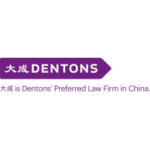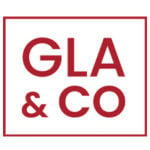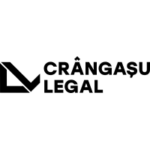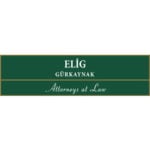-
Overview
The Competition Act, 2002 (“Act”) was enacted to establish the Competition Commission of India (“Commission”) to prevent practices having adverse effects on competition, to promote and sustain competition in markets, to protect the interest of the consumer and to ensure freedom of trade carried on by other participants, in India. Sections 5 and 6 (Combination and Regulation of Combination) of the Act serve as the cornerstone provisions for regulating combinations/concentrations in India. The Act adopts an ex-ante approach, aiming to prevent mergers, acquisitions, or amalgamations that could negatively impact competition within a defined market.
The term “combination” refers to specific forms of corporate restructuring that meet the financial thresholds outlined in Section 5 of the Act. Entities intending to engage in such combinations are required to notify the Commission before proceeding. The Commission then assesses whether the proposed transaction is likely to cause an appreciable adverse effect on competition (“AAEC”) in the relevant market. During this review period, a standstill obligation is imposed, and parties are prohibited from finalising the transaction until clearance is granted.
The merger control is governed by the The Competition Act, 2002, The Competition Commission of India (Combinations) Regulations, 2024, The Competition (Minimum Value of Assets or Turnover) Rules, 2024, The Competition (Criteria of Combination) Rules, 2024 and The Competition (Criteria for Exemption of Combinations) Rules, 2024.
-
Is notification compulsory or voluntary?
Subject to applicable exceptions including share subscription or financing facility or any acquisition, by a public financial institution, foreign portfolio investor, bank or Category I alternative investment fund, pursuant to any covenant of a loan agreement or investment agreement, transactions that qualify as combinations under Section 5 of the Act are required to compulsorily file the notice and take prior approval of the Commission.
-
Is there a prohibition on completion or closing prior to clearance by the relevant authority? Are there possibilities for derogation or carve out?
India regime is suspensory. The combination cannot be consummated without prior approval of the Commission. The Act however, does not prevent the implementation of an open offer or an acquisition of shares, securities convertible into other securities from various sellers, through a series of transactions on a regulated stock exchange from coming into effect, subject to conditions.
-
What types of transaction are notifiable or reviewable and what is the test for control?
A transaction that amounts to combination, requires prior approval of the Commission. In terms of sections 5 and 6 of the Act, if the combined asset value or the turnover of the combining parties exceeds the thresholds, the transaction amounts to a ‘combination’ and notifying the Commission is mandatory. The present thresholds are provided in subsequent paragraphs:
A transaction qualifies as a ‘combination’ under Section 5 of the Act if it meets any of the following criteria:
- Section 5(a): Acquisition of control, shares, voting rights, or assets by one enterprise from another, provided the transaction meets prescribed thresholds for asset value or turnover, whether within or outside India.
- Section 5(b): Acquisition of control over an enterprise by a person who already holds direct or indirect control over another enterprise engaged in similar, identical, or substitutable goods or services—again subject to asset or turnover thresholds.
- Section 5(c): Mergers and amalgamations fall within the scope of combinations if the resulting entity meets the minimum asset or turnover criteria.
These thresholds apply to both the target enterprise and the acquiring or merging parties, including their respective groups.
The Competition (Amendment) Act, 2023 introduced a new Deal Value Threshold (“DVT”). Under this provision, any acquisition, merger, or amalgamation qualifies as a combination if:
- The total value of the transaction exceeds INR 20 billion, and
- The target enterprise has significant business operations in India.
The Indian Government, exercising its powers under section 54(a) of the Act (Power to exempt) issued a notification exempting transactions in which a target company has assets of the value of not more than INR 4.5 billion in India or turnover of not more than INR 12.5 billion in India, from the filing requirement (“Target Exemption“).
- As a consequence of this Target Exemption, an acquisition in which the target company falls below the aforesaid thresholds of assets or turnover in India, does not amount to a combination under section 5 of the Act.
- In case of assets sale, the value of the assets being sold, and turnover therefrom will be considered for assessing the applicability of Target Exemption. Similarly, in case a business division of a company is being sold, only the assets value of such business division and turnover therefrom will be considered for assessing the applicability of Target Exemption.
- It is important to note that the Target Exemption is not applicable in case the Transaction Value Threshold is breached by the transaction.
Control
Historically, the Commission has relied on the ability to exert decisive influence or material influence—to determine whether control exists over an enterprise. However, the definition of control, as given in Explanation (a) to section 5 of the Act was amended in 2023, which now provides that “control” means the ability to exercise material influence, in any manner whatsoever, over the management or affairs or strategic commercial decisions by— (i) one or more enterprises, either jointly or singly, over another enterprise or group; or (ii) one or more groups, either jointly or singly, over another group or enterprise.
Control may be exercised in different forms: it can be affirmative or restrictive and may be held individually or jointly.
Control is typically established when a person or entity possesses specific rights in another company. These rights may include, among others, the authority to approve the business plan or annual budget, initiate new business activities, or appoint and remove key managerial personnel such as directors, the Company Secretary, or the CEO. Such rights reflect influence over the enterprise’s strategic and commercial decisions.
In cases of joint control, two or more parties share the ability to influence key decisions. Each party may hold veto power over strategic matters, potentially leading to a deadlock if consensus cannot be reached. Joint control can arise through equity ownership or contractual agreements among shareholders.
The determination of joint control is case-specific and requires a careful evaluation of the relevant statutory and contractual rights held by the parties involved.
-
In which circumstances is an acquisition of a minority interest notifiable or reviewable?
The Competition (Criteria for Exemption of Combinations) Rules, 2024 identifies the categories of combinations which fulfil the criteria mentioned in the Schedule shall be exempted from the requirement to comply with the statutory procedures under the Act. Acquisition of shares in the ordinary course of business including –
- Acquisitions of unsubscribed shares upon devolvement under an underwriting agreement as an underwriter registered with the Securities and Exchange Board of India (SEBI), provided the acquirer does not gain control of more than 25% of the total shares or voting rights.
- Acquisition of shares as a stockbroker registered with SEBI, provided the acquirer does not gain control of more than 25% of the total shares or voting rights.
- Acquisition of shares as a mutual fund registered with SEBI, provided the acquirer does not gain control of more than 10% of the total shares or voting rights.
- Acquisition of shares or voting rights solely for investment purposes, provided the acquirer does not obtain more than 25% of the total shares or voting rights.
- Acquisition of shares by the acquirer or its group entities holding shares or voting rights of the enterprise, provided it does not hold more than 25% of shares or voting rights either pre or post-acquisition.
- Acquisition of additional shares by the acquirer or its group entities that previously held more than 25% of the shares or voting rights, provided it does not hold more than 50% of the shares or voting rights post-acquisition.
- Acquisition of shares or voting rights in cases where the acquirer already holds 50%, and the acquisition does not result in change in control of the enterprise being acquired.
- Acquisition of assets in the ordinary course of business that includes acquisition of stock-in-trade, raw materials, stores and spares, trade receivables or other similar current assets
- Acquisition of assets not directly related to the business activity of the acquirer or solely as an investment, not leading to control of the acquired enterprise.
- Acquisition of shares pursuant to bonus issue, intra-group acquisitions, mergers or amalgamation, not resulting in change in control
-
What are the jurisdictional thresholds (turnover, assets, market share and/or local presence)? Are there different thresholds that apply to particular sectors?
The present jurisdictional thresholds are as under:
ASSETS TURNOVER India Acquirer and target (collectively) INR 25 billion INR 75 billion Acquirer’s group together with the target INR 100 billion INR 300 billion Worldwide Acquirer and target (collectively) USD 1.25 billion including assets of at least INR 12.5 billion in India USD 3.75 billion including a turnover of at least INR 37.5 billion in India Acquirer’s group together with the target USD 5 billion worldwide including assets of at least INR 12.5 billion in India USD 15 billion worldwide including a turnover of at least INR 37.5 billion in India Transaction Value Threshold: In addition to the aforesaid assets/value thresholds, all transactions where the transaction value exceeds INR 20 billion and local nexus requirement are met, prior approval of the Commission will have to be taken. Local nexus requirement is met if:
- the target’s Gross Merchandise Value, in India, in the 12 months preceding the notifiability trigger event is 10% or more of the global value, and more than INR 5 billion; or
- the target’s turnover, in India, in the preceding financial year is 10% or more of its global turnover, and more than INR 5 billion; or
- for digital markets, where (i) 10% or more of the target’s business or end users are in India.
Value of a transaction must include every valuable consideration, whether direct or indirect or current or future, including but not limited to:
- any separately agreed consideration on account of any undertaking or restriction imposed on any party (including for example, non-compete fees);
- all incidental arrangements entered into between the parties within two years of the transaction coming into effect, including technology assistance agreements, licensing of intellectual property rights, and supply of materials, etc.;
- for call options, assuming full exercise of such call option (without discounting to present value);
- the value attributable to all inter-connected steps; and
- consideration payable (as per best estimates) based on the occurrence of a future event / outcome captured in the transaction documents.
Further, the consideration of all transaction between the parties within two years prior to the trigger event (execution of a binding transaction document in case of acquisitions and board approval in case of mergers/amalgamations) and consideration to be paid within two years of consummation of the transaction shall be included to calculate the value of the transaction. In case of a transaction involving an open offer, full subscription to the offer must be considered for the computation of the value of such transaction. It is important to note that, if the precise value of a transaction cannot be established with reasonable certainty, the transaction may be considered to exceed the prescribed transaction value threshold.
-
How are turnover, assets and/or market shares valued or determined for the purposes of jurisdictional thresholds?
‘Turnover’ under the Act means the turnover certified by the statutory auditor on the basis of the last available audited accounts of the company in the financial year immediately preceding the financial year in which the notice is filed under sub-section (2) or sub-section (4) of section 6 of the Act and such turnover in India shall be determined by excluding intra-group sales, indirect taxes, trade discounts and all amounts generated through assets or business from customers outside India, as certified by the statutory auditor on the basis of the last available audited accounts of the company in the financial year immediately preceding the financial year in which the notice is filed under sub-section (2) or sub-section (4) of section 6 of the Act.
‘Value of assets’ shall be determined by taking the book value of the assets as shown, in the audited books of account of the enterprise, in the financial year immediately preceding the financial year in which the date of proposed combination falls and if such financial statement has not yet become due to be filed with the Registrar under the Companies Act, 2013 then as per the statutory auditor’s report made on the basis of the last available audited accounts of the company in the financial year immediately preceding the financial year in which the notice is filed under sub-section (2) or sub-section (4) of section 6 of the Act, as reduced by any depreciation, and the value of assets shall include the brand value, value of goodwill, or value of copyright, patent, permitted use, collective mark, registered proprietor, registered trade mark, registered user, homonymous geographical indication, geographical indications, design or layout-design or similar other commercial rights under the laws provided in sub-section (5) of section 3 of the Act (Anti-competitive agreements)
-
Is there a particular exchange rate required to be used for to convert turnover thresholds and asset values?
The Commission uses the average spot rate of the last six months, as quoted by Financial Benchmarks India Private Ltd., up to the date of the event which necessitated the filing before Commission to convert foreign currency into Indian Rupees for assessing turnover thresholds and asset values related to merger filings.
-
In which circumstances are joint ventures notifiable or reviewable (both new joint ventures and acquisitions of joint control over an existing business)?
Joint ventures, whether greenfield or brownfield, must be notified to the Commission, if any joint venture partner contributes assets to the joint venture entity, assuming the transaction meets the jurisdictional thresholds. In these cases, the joint venture is considered the acquiring party, as it seeks to obtain assets from one or more of its partners.
-
Are there any circumstances in which different stages of the same, overall transaction are separately notifiable or reviewable?
Under the Act, it is possible for different stages of the same overall transaction to be separately notifiable or reviewable before the Commission. This usually arises in cases where a transaction is executed in multiple phases, or where the structure involves a series of steps occurring at different points in time. Whether a separate filing is required for each stage depends on the legal and commercial relationship between those steps, and whether they are inter-connected or independent. Despite the requirement to file a single notice for inter-connected transactions, there are circumstances where separate notifications may be necessary. This happens when each phase of the transaction is independent in nature, and not contingent on or related to the execution of the other phases. If each step involves its own binding agreement, executed at different times and without any legal or commercial link to the other, then each such transaction may require a separate notification, provided it individually crosses the threshold under Section 5 of the Act. Furthermore, if the future steps of a transaction are uncertain, conditional, or not legally binding at the time of the initial filing, they may not require notification at that point. However, once those future steps become binding or are approved by the board, a fresh notification may become necessary.
The Commission follows the principle of substance over form when assessing whether multiple steps of a transaction should be considered as one combination. Where steps are contractually, legally, or commercially inter-dependent, the Commission expects parties to file a single, composite notification. This applies even if each step is executed through a separate agreement or occurs over time. The objective is to prevent parties from artificially breaking up a larger transaction into smaller parts to avoid scrutiny.
In Reliance Industries Ltd. vs Den Networks and Hathway Cable (Combination Registration No.C-2018/10/609 and C-2018/10/610), Reliance Industries acquired stakes in two cable companies through separate agreements. Despite being executed in different phases, the Commission held that the acquisitions were inter-connected and formed part of a single strategic combination. Hence, only one notification was required. Similarly, in the Blackstone vs Mphasis Ltd. (Combination Registration No.C-2016/04/391), Blackstone acquired shares through a share purchase agreement and an open offer. The Commission held that these steps were contractually tied and commercially linked and thus considered them as a single combination requiring a single filing.
-
How do the thresholds apply to “foreign-to-foreign” mergers and transactions involving a target / joint venture with no nexus to the jurisdiction?
In addition to the Deal Value Threshold and Target Exemption, the presence of even a minimal or prospective business connection to India, such as group affiliates, potential market entry, or downstream customers in India, can trigger review by Commission.
Important decisions illustrate Commission’s expansive approach to reviewing Foreign To Foreign Transactions:
- In re: Baxter International Inc. vs Gambro AB (Combination Registration No. C-2013/08/129), the Commission reviewed a global acquisition involving foreign entities since both had some Indian turnover, and the thresholds under Section 5 of the Act were met.
- In re: Etihad Airways PJSC vs Jet Airways (India) Ltd. (Combination Registration No. C-2013/05/122), although Etihad was a foreign airline, the proposed stake acquisition in Jet had a direct impact on the Indian aviation sector, making the deal reviewable.
- In re: Canon Inc. vs Toshiba Medical Systems (Combination Registration No. C-2016/05/400) involved a global transaction where the target had no substantial presence in India, but Commission asserted jurisdiction because Canon, the acquirer, had a significant business presence and the acquisition could influence competition in related Indian markets.
- In re: GE vs Alstom JV (Combination Registration No.C-2014/07/190) saw the Commission reviewing a joint venture formed abroad because the parties were participating in tenders in India, showing even potential or future business activities in India could trigger review.
-
For voluntary filing regimes (only), are there any factors not related to competition that might influence the decision as to whether or not notify?
India does not have a voluntary filing regime.
-
What is the substantive test applied by the relevant authority to assess whether or not to clear the merger, or to clear it subject to remedies?
In evaluating whether on not the proposed combination is likely to cause AAEC, the Commission considers the following factors:
(i) Competition from Imports
The Commission examines whether existing or potential imports exert competitive pressure on the merging entities. Import competition can mitigate anti-competitive effects, whether unilateral or coordinated. For instance:
- In Axiall/Shriram [Combination Registration No. C-2014/02/152, order dated 25.03.2014], the Commission observed that imports contributed to meeting domestic demand for PVC and PVC compounds.
- In TSL/Bhushan Steel [Combination Registration No. C-2018/03/562, order dated 25.04.2018], despite anti-dumping and safeguard duties, imports accounted for roughly 9% of HR-CSP sales, offering domestic buyers an alternative in case of price hikes.
(ii) Entry Barriers
The Commission evaluates obstacles that may hinder new entrants. Examples include:
- In Bayer/Monsanto [Combination Registration No. C-2017/08/523, order dated 14.06.2018], significant barriers were noted in crop protection due to high research and development costs, regulatory complexity, IP rights, and distribution requirements. The seed market also demanded long research and development timelines and extensive networks.
- In Grasim/Aditya Birla [Combination Registration No. C-2015/03/256, order dated 31.08.2015], the chemical manufacturing sector faced regulatory hurdles, including environmental clearances and compliance with energy standards, which collectively restricted new entry. Existing firms could expand, subject to approvals and capacity.
(iii) Market Concentration
The Commission assesses market concentration using tools like the Herfindahl-Hirschman Index (HHI) and Concentration Ratio (CR). Though no formal HHI guidelines exist, it is frequently applied:
- In Grasim/Aditya Birla [Combination Registration No. C-2015/03/256, order dated 31.08.2015], the SBP market showed high concentration, with HHI rising from 2300 to 4300 post-merger. An increase of over 200 points is generally seen as indicative of reduced competition.
- In Dow Chemicals/DuPont [Combination Registration No. C-2017/06/519, order dated 18/9/2017], the insecticide market for soybean pests saw HHI increase by 500–600 points, suggesting enhanced market power for the merged entity.
(iv) Countervailing Buyer Power
The Commission considers whether buyers can resist price increases or exert influence:
- In HPPL/PPIL [Combination Registration No. C-2014/07/193, order dated 20.11.2014], large corporate customers were found to have substantial bargaining power.
- In JK Tyre/Cavendish Industries, [Combination Registration No. C-2015/10/322, order dated 18.02.2016] OEMs like State Road Transport Corporations and fleet owners had procurement leverage. Multi-brand dealers and consumer choice across brands further strengthened buyer power.
- In Publicis Groupe/Omnicom [Combination Registration No. C-2013/08/128, order dated 26.08.2013], the presence of multiple service providers ensured customers retained negotiating strength.
(v) Potential for Price or Margin Increase
The Commission evaluates whether the merger would enable the parties to raise prices or margins significantly and sustainably:
- In Grasim/Aditya Birla [Combination Registration No. C-2015/03/256, order dated 31.08.2015], the parties’ growing market share in SBP and their combined 50% share in PAC suggested considerable market power. The Commission concluded that such dominance, coupled with financial strength, could lead to sustained price increases post-merger.
(vi) Sustainability of Market Competition
The Commission evaluates whether effective competition will persist after the merger. In Airtel/Tata Teleservices, [Combination Registration No. C-2017/10/531, order dated 16.11.2017]it found that post-merger, five telecom providers (four private and one public) would remain active across all telecom circles. Given the size and capabilities of these players, the Commission concluded that they would continue to exert sufficient competitive pressure, thereby mitigating any risk of AAEC.
(vii) Availability of Substitutes
The Commission examines whether alternative products exist or are likely to emerge that could replace those offered by the merging parties. The presence of viable substitutes can reduce the risk of market power concentration.
(viii) Market Share of the Parties
The Commission assesses both individual and combined market shares before and after the merger:
- In TSL/Bhushan Steel [Combination Registration No. C-2018/03/562, order dated 25.04.2018], the combined share in the HR-CSP market was 25–30% by production capacity and 20–25% by domestic sales. These levels were not considered likely to cause AAEC.
- In Grasim/Aditya Birla [Combination Registration No. C-2015/03/256, order dated 31.08.2015], the parties held over 40% and nearly 15% respectively in the PAC market, resulting in a post-merger share exceeding 55%. The Commission viewed this as a significant increase in market power.
(ix) Elimination of a Key Competitor
The Commission considers whether the merger would remove a strong and effective competitor, thereby reducing market rivalry. In Bayer/Monsanto, both parties were dominant in the transgenic cotton seed segment. Monsanto led in herbicide-tolerant and insect-resistant traits, while Bayer was the only other player with both capabilities. The merger was seen as eliminating the only viable competitor, potentially leading to monopolistic conditions.
(x) Vertical Integration
The Commission assesses whether the merging entities are vertically integrated and whether such integration could be used to exclude rivals from supply or distribution channels. It also considers whether other market participants can impose competitive constraints:
- In Bayer/Monsanto [Combination Registration No. C-2017/08/523, order dated 14.06.2018], few competitors had strong distribution networks, limiting their ability to challenge the merged entity.
- In TSL/Bhushan Steel [Combination Registration No. C-2018/03/562, order dated 25.04.2018], although both were vertically integrated, the presence of other integrated firms like Essar, SAIL, and JSW suggested that the merger would not significantly harm competition.
(xi) Failing Firm Consideration
The Commission may consider whether one of the merging parties is a failing business. If the merger prevents the exit of a financially distressed firm, it may be viewed more favourably, provided the failing firm defence is substantiated.
(xii) Impact on Innovation
The Commission evaluates how the merger might affect innovation in the relevant market. In Bayer/Monsanto [Combination Registration No. C-2017/08/523, order dated 14.06.2018], it noted that only a few players, including Syngenta, had the capacity for integrated research and development in the non-selective herbicide segment. The merger was likely to reduce future innovation by consolidating research and development capabilities and limiting competition in the discovery of new active ingredients and formulations.
(xiii) Contribution to Economic Development Despite Potential AAEC
If the Commission determines that a proposed combination is likely to result in an AAEC, it will also evaluate whether the transaction offers significant benefits to economic development. This includes assessing whether the combination could lead to enhanced productivity, infrastructure growth, technological advancement, or employment generation that may justify its approval despite competitive concerns.
(xiv) Balancing Benefits Against Adverse Effects
The Commission undertakes a comprehensive evaluation of both the positive and negative consequences of the proposed combination. Its objective is to identify and address any competition-related risks arising directly from the transaction, without attempting to resolve broader market inefficiencies or pre-existing structural issues unrelated to the merger.
If the combination does not materially affect competition in either horizontal or vertical markets—as defined under Section 20(4) of the Act (Inquiry into combination by Commission) then it is not considered harmful to competition. The focus remains on determining the extent of competitive loss attributable solely to the proposed merger.
If the Commission finds that the combination is likely to result in AAEC, it may either block the transaction or suggest modifications under Section 31(3). Remedies may be structural (such as divestiture of overlapping business segments) or behavioural (such as access commitments or non-discriminatory pricing terms). The goal of remedies is to preserve or restore competition without unnecessarily preventing the merger. The Commission often engages in a dialogue with the parties to arrive at mutually acceptable modifications.
-
Are factors unrelated to competition relevant?
The Act does not expressly permit consideration of non-competition factors such as employment, regional development, or national interest. The transactions involving foreign investment in sectors like defence, telecom, or media often require parallel approvals under the Foreign Direct Investment Policy or sectoral laws. These approvals may be guided by public policy, security, or socio-economic considerations. However, the Commission’s role remains narrowly confined to assessing market concentration, barriers to entry, and other indicators of potential anti-competitive outcomes.
-
Are ancillary restraints covered by the authority’s clearance decision?
As on date, the Commission does not assess ancillary restrains. Earlier the Commission used to consider and assess non-compete clauses. However, that practice has been stopped.
-
For mandatory filing regimes, is there a statutory deadline for notification of the transaction?
The filing can be done anytime before the closing of the transaction. However, the transaction or any part thereof cannot be consummated prior to getting the Commission’s approval.
-
What is the earliest time or stage in the transaction at which a notification can be made?
The parties may file the notice post:
- Execution of agreement, in case of acquisition;
- Board approval of the concerned entities, in case of merger or amalgamation.
-
Is it usual practice to engage in pre-notification discussions with the authority? If so, how long do these typically take?
The Commission permits pre-filing consultation. During these consultations parties can seek clarifications regarding notification requirements, thresholds, filing format, or the need for a detailed market analysis. Parties also get an opportunity to discuss the data that the Commission may require for assessing the transaction. This ensures an early approval once notice is filed.
The Commission further clarifies this practice through its Frequently Answered Questions and public notices, emphasizing that such discussions are permitted and encouraged when procedural doubts exist. These engagements are entirely non-binding, confidential, and conducted off-the-record through email, phone, or meetings with the Commission’s Combination Division.
-
What is the basic timetable for the authority’s review?
The Commission follows a two-phase review process, depending on whether the proposed transaction is likely to cause any adverse effect on competition in the relevant market in India.
Once the parties file the notification in Form I or Form II, the Commission undertakes a preliminary assessment of whether the combination is likely to cause an AAEC. The Commission must form its prima facie opinion within 30 working days from the date of receipt of a complete and valid filing (excluding time taken for responding to queries).
If the prima facie opinion of the Commission is that a combination is not likely to cause AAEC, then it will pass an order approving the combination.
However, if the Commission’s prime facie opinion is that the combination is likely to cause an AAEC then CCI issues a show cause notice to the parties to combination, calling upon them to explain why detailed investigation in respect of such combination should not be conducted. If the parties are able to address the concerns of the Commission regard the potential AAEC, then the Commission passes an order approving the combination.
On the other hand, if the response of the parties is not found to be satisfactory, the Commission can initiate an in-depth investigation into the combination, known as the Phase II investigation. The Commission has up to 150 calendar days to complete such investigation.The timelines are significantly reduced in case of Green Channel filings. Green Channel filing provides for an automatic system of approval for combinations, where there are no business overlaps, horizontal, vertical or complementary, between the parties to combination. These combinations are presumed to be not likely to cause AAEC. Green Channel filing has been discussed in detail in subsequent paragraphs.
-
Under what circumstances may the basic timetable be extended, reset or frozen?
If the Commission issues a Request for Information the review clock will pause until a complete response is submitted. Once the required information is provided, the clock resumes. If the Commission finds that the notification is incomplete or misleading, it may declare the filing invalid and direct the parties to re-file the notification. This results in the review clock restarting entirely, beginning from the new filing date. Parties may withdraw and refile the notification if major changes are needed (e.g., due to structural modifications in the transaction or regulatory feedback). This resets the review clock entirely from the new filing date.
The concept of extending, resetting, or freezing the timetable does not apply to the Green Channel mechanism, wherein the combinations that pose no overlaps are deemed approved on filing.
-
Are there any circumstances in which the review timetable can be shortened?
The Competition Commission of India (Combinations) Regulations, 2024 provides for the Green Channel mechanism wherein certain combinations that pose no overlaps (i.e., no horizontal, vertical, or complementary relationships) between the parties are deemed approved upon filing. If a combination fulfils such criteria, then notice for such combination may be given to the Commission in the form prescribed for Green Channel filing, disclosing the details of the proposed combination. Further, under the Competition (Criteria of Combination) Rules, 2024, the parties to a combination, their respective group entities and their affiliates which fulfil the following criteria, may give notice for such combination under that sub-section, namely: –
- they do not produce or provide similar or identical or substitutable product or service;
- they are not engaged in any activity relating to production, supply, distribution, storage, sale and service or trade in product or provision of service,–
- which are at different stage or level of production; or
- which are complementary to each other.
-
Which party is responsible for submitting the filing?
For mergers and amalgamations, all merging entities are required to jointly file the combination notice with the Commission. The Acquirer is responsible for filing the notice with Commission in case of an acquisition.
-
What information is required in the filing form?
Inter alia, following data/information must be provided in the form:
- Name and contact details of parties;
- Ownership and control of the parties;
- Type and structure of the merger;
- market share information;
- Horizontal and vertical overlaps between the parties;
- Actual and potential level of competition through imports in the market;
- Extent of barriers to entry into the market;
- Level of combination/concentration in the market;
- Degree of countervailing power in the market;
- Likelihood that the combination would result in the parties to the combination being able to significantly and sustainably increase prices or profit margins;
- Extent of effective competition likely to sustain in a market;
- Extent to which substitutes are available or are likely to be available in the market;
- Likelihood that the combination would result in the removal of a vigorous and effective competitor or competitors in the market;
- Nature and extent of vertical integration in the market;
- Possibility of a failing business;
- Nature and extent of innovation in the market;
- Relative advantage, by way of the contribution to the economic development, by any combination having or likely to have AAEC; and
- Whether the benefits of the combination outweigh the adverse impact of the combination, if any.
-
Which supporting documents, if any, must be filed with the authority?
Document Type
Who Must Provide It Translation Required Certification/ Notarisation
Validity/Time Limit Additional Notes Power of Attorney / Board Resolution Each notifying party Yes, if not in English or Hindi Usually notarised; apostille not mandatory unless requested Should be current and valid at time of filing Authorizes representative to file on behalf of company Certificate of Incorporation Each notifying party Yes, if not in English or Hindi No notarisation or apostille needed No strict limit; must be authentic and valid Issued by Registrar of Companies or equivalent Articles/ Memorandum of Association (AoA/MoA)
Each notifying party Yes, if not in English Self-certified copies accepted Submit latest version if amended Governs internal company rules Annual Reports and Financial Statements All parties to the transaction Yes, if not in English Audited versions preferred Past two financial years Important for financial and market analysis Transaction Documents (e.g., SPA, Scheme of Amalgamation) All parties to the transaction Yes, if not in English Executed copies preferred Latest version available at time of filing Key to understanding transaction structure Market Studies / Reports Any party using them in the transaction Yes, if not in English No formal notarisation needed Should be recent and relevant Useful for market impact analysis -
Is there a filing fee?
The current statutory filing fee is as under:
Form Type Fee (INR) Form I INR 30,00,000 Form II INR 90,00,000 -
Is there a public announcement that a notification has been filed?
The Commission is extremely sensitive regarding confidential data/information. Post filing, the Commission issues a notice on its website that a notification has been filed unless the parties have filed for confidentiality for the entire transaction. Such notice will include a non-confidential summary filed by the parties. Further the Commission maintains the same degree of confidentiality while publishing the final order, redacting all confidential data/information from such order.
-
Does the authority seek or invite the views of third parties?
The Commission sometimes seeks the views of third parties, especially when a transaction could affect the market structure or raise competition concerns. The Commission uses its discretion based on the nature and complexity of the transaction. Phase II investigation, also known as a full or in-depth investigation, involves extensive information gathering to determine if a combination is likely to cause an AAEC or harm competition. The process includes the issuance of a show cause notice, a public comment period inviting third parties like competitors and customers, detailed economic analysis, and potentially a statement of objections leading to approval, disapproval, or conditional approval with modifications. For instance, the Commission sought public comments on Bharat Forge Ltd’s proposed acquisition of AAM India Manufacturing Corporation Pvt Ltd [Combination Registration No.C-2024/10/1197] after prima facie concluding that the transaction could adversely impact competition. The Commission has issued its first conditional merger approval in Phase II since 2019 – though its clearance of Bharat Forge’s acquisition of AAM India Manufacturing.
-
What information may be published by the authority or made available to third parties?
The Commission publishes a non-confidential summary of the combination notice on its website soon after the notification is filed and a final order of approval regarding the combination. The summary includes non-confidential basic information such as the names of the parties, nature of the transaction, and the sectors involved. The supporting documents submitted with the notification, such as agreements, board resolutions, and market data, are not published or made available to the public or third parties.
Parties can request that specific information not be disclosed. Such requests must be justified and are subject to the Commission’s approval.
Under Competition Commission of India General Regulation 2024, the parties to a proceeding can apply for inspection of their case-related documents for a fee. Non-parties can also apply for inspection of documents, provided they demonstrate sufficient cause. However, such request for inspections by a third party are usually not entertained by the Commission.
-
Does the authority cooperate with antitrust authorities in other jurisdictions?
Over the past decade, the Commission has signed several Memoranda of Understanding (MoUs) with its foreign counterparts. Some of the key jurisdictions with which the Commission has formal cooperation agreements include:
- United States: With both the U.S. Federal Trade Commission (FTC) and the Department of Justice (DOJ) – Antitrust Division, signed in 2012.
- European Union: With the European Commission’s Directorate-General for Competition, signed in 2013.
- Brazil, Russia, China, and South Africa (BRICS nations): Through the BRICS International Competition Conference and bilateral MoUs, especially with China’s State Administration for Market Regulation (SAMR) and South Africa’s Competition Commission.
- Australia: With the Australian Competition and Consumer Commission (ACCC).
- Canada: With the Competition Bureau of Canada.
- France: With the Autorité de la concurrence.
- Japan: With the Japan Fair Trade Commission (JFTC).
- Germany: With the Bundeskartellamt, signed in 2013.
- United Kingdom: With the Competition and Markets Authority (CMA), to enhance collaboration post-Brexit.
-
What kind of remedies are acceptable to the authority?
The Commission accepts both structural and behavioural remedies.
For instance in the Lafarge-Holcim [Re Holcim Ltd, Combination Registration No. C-2014/07/ 190, decided on 30 March 2015] deal, the Commission was of the prima facie opinion that the acquisition of Lafarge by Holcim would cause AAEC in the market for grey cement in the Eastern India in terms of significantly increasing concentration in the market. Further, in light of low countervailing power of the consumers and relatively smaller competitors in a market with high entry barriers, the parties to the combination together had the ability to charge higher prices with their control over substantial installed capacity in the region. The Commission in order to eliminate the possibility of AAEC proposed on the basis of location of plants, pan relevant market impact, impact on concentration divestiture of Lafarge’s plants located in certain regions. The Commission approved the Combination subject to the parties carrying out the modifications suggested by the Commission.
Similarly, in the merger deal of Ranbaxy and Sun Pharma [Sun Pharmaceutical Industries Ltd and Ranbaxy Laboratories Ltd, Combination Registration No. C-2014/05/170], the Commission noted that the proposed merger would significantly reduce competition in the relevant market. Accordingly, the Commission approved the proposed merger subject to divestment of certain products by both Sun Pharma and Ranbaxy.
In Orchid Chemicals [Re Orchid Chemicals & Pharmaceuticals Ltd, [2013] 115 CLA 406 (CCI) : [2014] 125 SCL 27 (CCI).], the notice of the proposed combination was given pursuant to a business transfer agreement between Orchid Chemicals & Pharmaceuticals Ltd (OCPL) and Hospira Healthcare India (P.) Ltd (HHIPL). The Business Transfer Agreement contained a non-compete clause which stipulated that OCPL and its promoter could not undertake certain business activities pertaining to the transferred business, for a period of 8 years and 5 years, respectively. The said non-compete obligation also restricted research, development and testing of certain products. The Commission was of the view that non-compete obligations, if deemed necessary to be incorporated, should be reasonable particularly in respect of (a) the duration over which such restraint is enforceable; and (b) the business activities, geographical areas and person(s) subject to such restraint, so as to ensure that such obligations do not result in an AAEC. in response to the justification sought by the Commission on the non-compete clause, the parties to the combination modified the BTA to reduce the duration of the non-compete clause and also allowed OCPL to conduct research and development. The Commission accepted the modification and approved the combination.
Divestment has been commonly suggested by the Commission as a modification in the proposed combination to eliminate the substantial overlap and high concentration in terms of presence of the Parties in the affected regions and for establishment of independent competitor(s) or strengthening of the existing competitor(s) by ensuring that they have an integrated presence in markets.[ Linde Aktiengesellschaft and Praxair, Inc., Combination Registration No. C-2018/01/545, order dated 6/9/2018; Bayer AG, Combination Registration No. C-2017/08/523, order dated 14/6/2018]
In PVR-DT Cinema, [Combination Registration No. C-2015/07/288, order dated 4/05/2016]the Commission observed that the likelihood of combination resulting in sustained/significant increase in prices was high as there would be limited incentive for the Acquirer to maintain competitive prices in the absence of effective competition in the relevant market for exhibition of films in multiplex theatres in Noida. The Commission however approved the combination in light of the commitments offered by PVR in terms of non-expansion; non increase of charges; non-acquisition of new screens, etc. along with divestiture of certain screens by PVR. PVR shall not expand, i.e., open through organic expansion or takeover through inorganic acquisition, any new screens (either single screen or multiplex), for certain period of time from the date of completion of the proposed combination.
In Abbott Laboratories [Abbott Laboratories, Competition Registration No C-2016/08/418, 2016], the proposed combination which raised a concern of AAEC in the market for medical devices as the combined market share of the merged entity would have been over 90%, was remedied by the target entity divesting itself of the international business. [Dow-Dupont, Competition Registration No C-2016/05/400, 2017] Selling of a business unit or subsidiary to a third part can also constitute part of the remedy.[China National Agrochemical Corporation, C-Competition Registration No. 2016/08/424, 2017.]
In the Reliance Industries Case, [Combination Registration No. C-2024/05/1155 [Notifying parties – 1. Reliance Industries Limited 2. Viacom18 Media Private Limited 3. Star India Private Limited 4. Star Television Productions Limited] Commission noted noted that the Parties held exclusive rights to broadcast and stream major cricket events in India, including Indian Premier League, International Cricket Council, and the Board of Cricket Control in India matches, which dominate viewership. These rights are held for three to four years, after which fresh bidding will occur. Concerns were raised by Commission that the JV could wield significant negotiating power, enabling practices such as self-preferencing, discriminatory pricing, denial of fair access to rivals, and limiting customer choices, potentially restricting market access for competitors. Accordingly, Commission imposed both structural and behavioural remedies. Structural remedies included divestment of TV channels and renouncement of rights by Reliance Industries Limited in one of the enterprises engaged in the relevant market. Behavioural remedies included a commitment not to bundle TV or OTT ad sales for Indian Premier League, International Cricket Council, and the Board of Cricket Control in India rights, or between IPL TV and OTT platforms. Parties committed to comply with the Sports Broadcasting Signals Act, offer ad space on fair terms, and avoid unreasonable ad rate increases for ICC and IPL events during the current rights period.
In the General Atlantic Case, [Combination Registration No. C-2023/04/1017 [Notifying party – General Atlantic Singapore ACK Pte. Ltd.] Commission had significant concerns in the relevant market for society/gated community management as both Vivish (MyGate), where the Target Acko Tech held 2.95% stake and NoBroker, where General Atlantic held 32.4% stake, were prominent players, raising risks of softening competition due to General Atlantic’s influence. However, Commission approved the combination after the parties offered the behavioral commitment to the effect that Parties will not – (i) Participate in or influence matters related to Vivish or Acko Tech’s investment in it; (ii) Access or receive non-public information about Vivish from Acko Tech; and (iii) Influence any person appointed by Acko Tech as observer on Vivish’s board.
In the GI Greenpac Limited Case, [Combination Registration No. C-2022/11/983 [Notifying parties- GI Greenpac Limited and Hindustan National Glass & Industries Limited] AGI Greenpa Limited proposed acquiring 100% equity share capital of Hindustan National Glass & Industries Limited, undergoing Corporate Insolvency Resolution Process (CIRP) under the Insolvency and Bankruptcy Code, 2016. Commission raised concerns regarding significant combined market share in the container glass segment, particularly in alco-beverages and food and beverage (Fand B) industries. AGI Greenpac Limited offered structural remedies to maintain market balance and enable effective competition. It also offered behavioral commitments to ensure compliance with fair trade practices and equitable access to all market participants post-transaction. It also committed to revamping Target’s outdated furnaces and operational inefficiencies, projecting benefits like sustained employment and improved consumer offerings.
In the Google International LLC Case, [Combination Registration No. C-2022/03/913 [Notifying parties: Google International LLC and Bharti Airtel Limited] the proposed combination included Google’s acquisition of a non-controlling minority stake (1.28%) in Bharti Airtel Limited for INR 52.2438 billion through an Investment Agreement (IA). The Commission raised potential risks of competitively sensitive information flow between Airtel and Jio Platforms Limited (JPL), where Google held a minority stake. The proposed combination was approved subject the following behavioral commitments offered by Google:
- Firewall for Data Protection: Google committed to maintaining a firewall to prevent competitively sensitive information from flowing between Airtel and Jio Platforms, ensuring no misuse of data.
- Amendments to Co-Marketing Agreement: Certain clauses of the agreement were modified to prevent anti-competitive practices, ensuring Airtel retains independence in marketing and device-related strategies.
- No Data Sharing: Google explicitly confirmed no customer or user-specific data would be shared under the Co-Marketing Agreement or Cloud Agreement.
In majority of cases structural remedy in the form of divestiture has been suggested by the Commission or has been offered by the parties to the combination. Non-structural remedies like in PVR-DT Cinema can also be added along with the structural remedy. Non-structural remedies like non-exclusive licensing on a FRAND basis [Bayer-Monsanto, Combination Registration No. C-2017/09/523, 2018]; rule of information control for prohibiting exchange of information [Nippon Yusen Kabushiki, C-2016/11/459, 2017; Northern TK Venture, C-2018/09/60, 2018] or non-compete obligations [Dish TV-Videocon, Combination Registration No. C-2016/12/463, 2017, order dated 4/5/2017] have been used to remedy the combinations.
-
What procedure applies in the event that remedies are required in order to secure clearance?
Remedies become necessary if the Commission raises concerns that the proposed transaction may harm competition (e.g., by creating a monopoly or reducing market competition). In such cases, parties (the merging entities) may voluntarily offer remedies to address these concerns and ensure that the deal receives approval. Regulation 25 of the Competition Commission of India Combinations Regulations outlines the procedures for modifying proposed combinations to address concerns about their potential adverse effects on competition.
- If the Parties accept the modification proposed by the Commission, they shall carry out such modification within the stipulated time. If they fail to carry out the modification within the stipulated time, such combination shall be deemed to have an AAEC and the Commission shall deal with such combination in accordance with the provisions of this Act.
- If the Parties do not accept the modification proposed by the Commission they may, within thirty working days of the modification proposed by the Commission, submit amendment to the modification proposed by the Commission. If the Commission agrees with the amendment, it shall, by order, approve the combination. If the Commission does not accept the amendment submitted, then, the Parties shall be allowed a further period of thirty working days within which such parties shall accept the modification proposed by the Commission. If the Parties fail to accept the modification proposed by the Commission, the combination shall be deemed to have an AAEC and be dealt with in accordance with the provisions of the Act.
Where the Commission has directed that the combination shall not take effect or the combination is deemed to have an AAEC, then, without prejudice to any penalty which may be imposed or any prosecution which may be initiated, the Commission may order that the combination shall not be given effect to.
If the Commission does not, on the expiry of a period of two hundred and ten days from the date of notice given to the Commission under section 6(2) of the Act, pass an order or issue direction in accordance with Section 31 of the Act (orders of the Commission on combinations), the combination shall be deemed to have been approved by the Commission.
The modification referred to above shall be carried out by the parties to the combination within the period as may be specified by the Commission. The parties to the combination shall, upon completion of modification, file a compliance report for the actions required for giving effect to the combination before the Secretary within seven days of such completion. In case the parties to the combination fail to file the compliance report, the Secretary shall place the matter of such non-compliance before the Commission for appropriate directions. Where the Commission is of the opinion that the modification proposed by it and accepted by the parties to the combination needs supervision, it may appoint independent agencies, to oversee the modification, on such terms and conditions as may be decided by the Commission. However, in practice, the CCI approved the transaction after the parties proposed a modification.
In Northern TK Venture / Fortis Healthcare, [Combination Registration No. C-2018/09/601] the parties were competitors in the field of healthcare. They were setting up a joint venture in the same market. In order to alleviate any potential concern that the said joint venture may provide a common platform for coordinated behaviour, the parties inter alia submitted voluntary commitments:
- The joint venture shall operate as separate, independent and competitive businesses;
- Prohibition against exchange of information between parties through joint venture; and
- Annual certificate of compliance supported by affidavits from the relevant officers of the parties.
Similarly, in Torrent Pharmaceuticals/ Elder Pharmaceuticals, [Combination Registration No. C-2014/01/148] the Commission raised queries with respect to the non-compete clause. In their response, the parties proposed modifications to the non-compete clause, reducing its scope and duration. The Commission approved the combination subject to the modifications in the non-compete clause.
-
What are the penalties for failure to notify, late notification and breaches of a prohibition on closing?
The Commission can impose a penalty of up to 1% of the total turnover or value of assets, whichever is higher, of the combination for failure to notify the Commission.
The Commission has discretion to impose a fine up to 1% of turnover or assets, in case of delay in filing the notice but usually imposes lower fines for genuine delay.
-
What are the penalties for incomplete or misleading information in the notification or in response to the authority’s questions?
Providing false information or non-compliance with Commission orders may attract penalties up to INR 0.01 billion.
-
Can the authority’s decision be appealed to a court?
Yes, The Commission’s decision can be challenged before the National Company Law Appellate Tribunal (“NCLAT”). However, it is important to note that till date, the Commission has not rejected any combination. There have been a few instances, where an approval order has been challenged. However, the NCLAT has refused to entertain such challenges, citing absence of locus standi.
-
What are the recent trends in the approach of the relevant authority to enforcement, procedure and substantive assessment?
As noted above, the Act has undergone significant reforms with the new combination regulations and amendments to Section 5 and 6 of the Act (Combination and Regulation for combination). The Competition (Amendment) Act, 2023 introduced a new Deal Value Threshold (DVT), Target Exemption. There is procedural efficiency since there is a reduced timeline for approval of combinations from 210 days to 150 days and from 30 days to 15 days for the Commission to pass a prima facie opinion on the likelihood of a combination causing AAEC. The Competition (Minimum Value of Assets or Turnover) Rules, 2024 crystalize the de-minimis exemption and stipulate that under section 5(e) of the Act (Combination), an acquisition, control, merger or amalgamation does not constitute a combination if the value of the assets or turnover of the enterprise being acquired, taken control of, merged or amalgamated in India is below the following prescribed limits (i) The minimum value of assets for an enterprise will be INR4.5bn. (ii) The minimum value of the turnover for an enterprise will be INR12.5bn. The Competition (Criteria for Exemption of Combinations) Rules, 2024 enumerate the categories of combinations that, upon satisfying the following criteria, are exempted from the notice requirements for combinations. The present merger control regime aims to streamline business transactions and notification requirements. It has reduced the compliance burden for transactions that are unlikely to have an AAEC.
-
Are there any future developments or planned reforms of the merger control regime in your jurisdiction?
It is expected that the Commission will continue to be lenient with its approval for combinations in India unless they are likely to cause substantial AAEC. The Commission has taken great efforts to reduce the average time lines for granting approval.
India: Merger Control
This country-specific Q&A provides an overview of Merger Control laws and regulations applicable in India.
-
Overview
-
Is notification compulsory or voluntary?
-
Is there a prohibition on completion or closing prior to clearance by the relevant authority? Are there possibilities for derogation or carve out?
-
What types of transaction are notifiable or reviewable and what is the test for control?
-
In which circumstances is an acquisition of a minority interest notifiable or reviewable?
-
What are the jurisdictional thresholds (turnover, assets, market share and/or local presence)? Are there different thresholds that apply to particular sectors?
-
How are turnover, assets and/or market shares valued or determined for the purposes of jurisdictional thresholds?
-
Is there a particular exchange rate required to be used for to convert turnover thresholds and asset values?
-
In which circumstances are joint ventures notifiable or reviewable (both new joint ventures and acquisitions of joint control over an existing business)?
-
Are there any circumstances in which different stages of the same, overall transaction are separately notifiable or reviewable?
-
How do the thresholds apply to “foreign-to-foreign” mergers and transactions involving a target / joint venture with no nexus to the jurisdiction?
-
For voluntary filing regimes (only), are there any factors not related to competition that might influence the decision as to whether or not notify?
-
What is the substantive test applied by the relevant authority to assess whether or not to clear the merger, or to clear it subject to remedies?
-
Are factors unrelated to competition relevant?
-
Are ancillary restraints covered by the authority’s clearance decision?
-
For mandatory filing regimes, is there a statutory deadline for notification of the transaction?
-
What is the earliest time or stage in the transaction at which a notification can be made?
-
Is it usual practice to engage in pre-notification discussions with the authority? If so, how long do these typically take?
-
What is the basic timetable for the authority’s review?
-
Under what circumstances may the basic timetable be extended, reset or frozen?
-
Are there any circumstances in which the review timetable can be shortened?
-
Which party is responsible for submitting the filing?
-
What information is required in the filing form?
-
Which supporting documents, if any, must be filed with the authority?
-
Is there a filing fee?
-
Is there a public announcement that a notification has been filed?
-
Does the authority seek or invite the views of third parties?
-
What information may be published by the authority or made available to third parties?
-
Does the authority cooperate with antitrust authorities in other jurisdictions?
-
What kind of remedies are acceptable to the authority?
-
What procedure applies in the event that remedies are required in order to secure clearance?
-
What are the penalties for failure to notify, late notification and breaches of a prohibition on closing?
-
What are the penalties for incomplete or misleading information in the notification or in response to the authority’s questions?
-
Can the authority’s decision be appealed to a court?
-
What are the recent trends in the approach of the relevant authority to enforcement, procedure and substantive assessment?
-
Are there any future developments or planned reforms of the merger control regime in your jurisdiction?





















